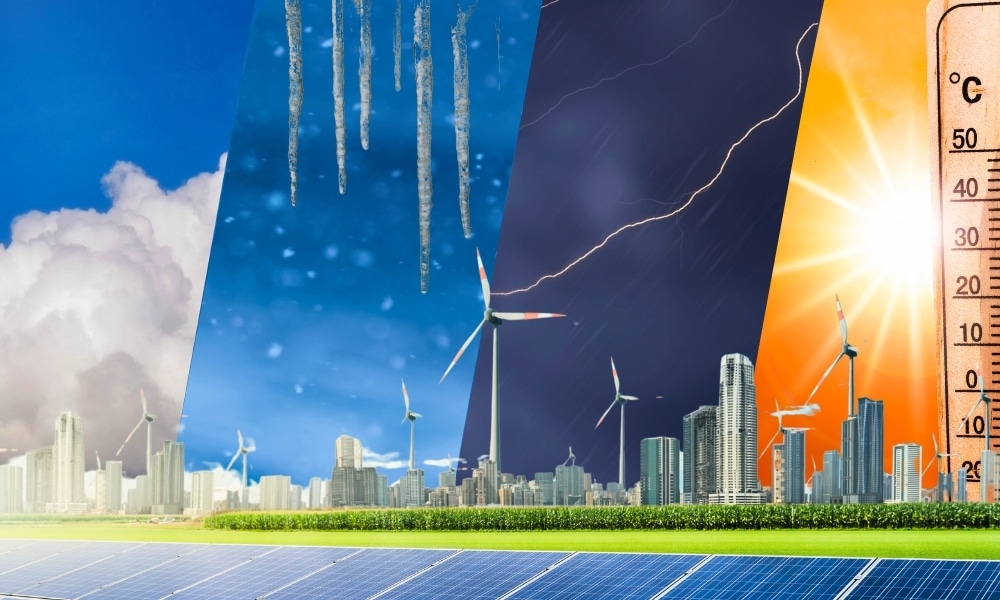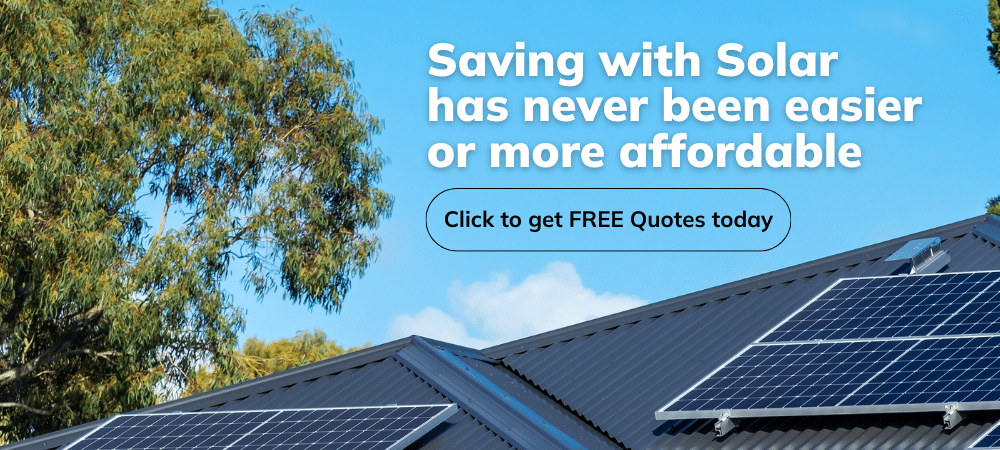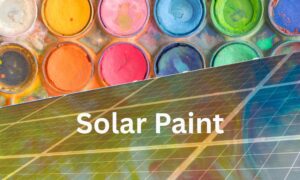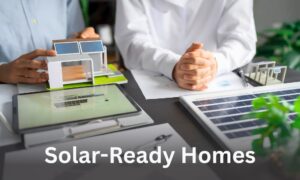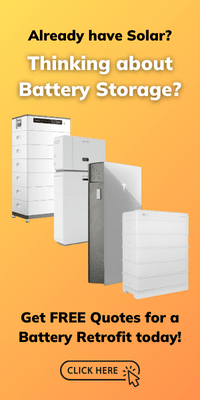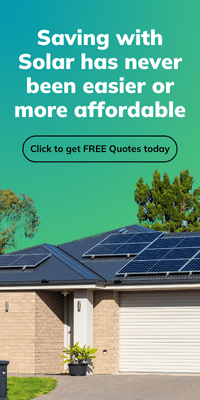As the climate continues to show unpredictable extremes, many ask: Can solar panels in Australia withstand severe weather conditions? With scorching summers, cyclones, hailstorms, and heavy rains, solar durability is critical for homeowners and businesses alike. Below is a detailed breakdown of how solar panels perform in Australia’s harsh climates, the technology behind their resilience, and steps to ensure long-lasting, weatherproof systems.
What makes solar panels durable in extreme weather?
Solar panels are engineered for longevity and resilience, even in environments with volatile weather. Modern solar systems are designed to endure high winds, temperature fluctuations, and even hail. Built with robust materials such as tempered glass, aluminium frames, and sturdy mounts, they protect against structural and functional damage. Key features that contribute to solar durability include:
- Quality glass and frame materials: Tempered glass provides impact resistance, while corrosion-resistant aluminium frames add to structural integrity.
- Weatherproof coatings: Panels often have special coatings to repel water and minimise wear.
- Heat tolerance: Modern panels are tested for thermal endurance, meaning they won’t degrade or overheat under direct sunlight or during high temperatures.
These factors are essential in solar panel weatherproofing, enabling systems to withstand intense climates over many years.
Solar panels in harsh climates: A breakdown by weather type
Australia’s diverse climate poses unique challenges to solar installations. From tropical storms in the north to arid, sun-drenched deserts in the interior, solar systems must be adaptable to various conditions.
1. High temperatures and sun exposure
Australia is famous for its sun, but extremely high temperatures can impact solar efficiency. Solar in harsh climates like deserts, where temperatures can exceed 45°C, may lead to a temporary decrease in power output due to thermal expansion of materials. However, solar panels have built-in mechanisms to minimise overheating:
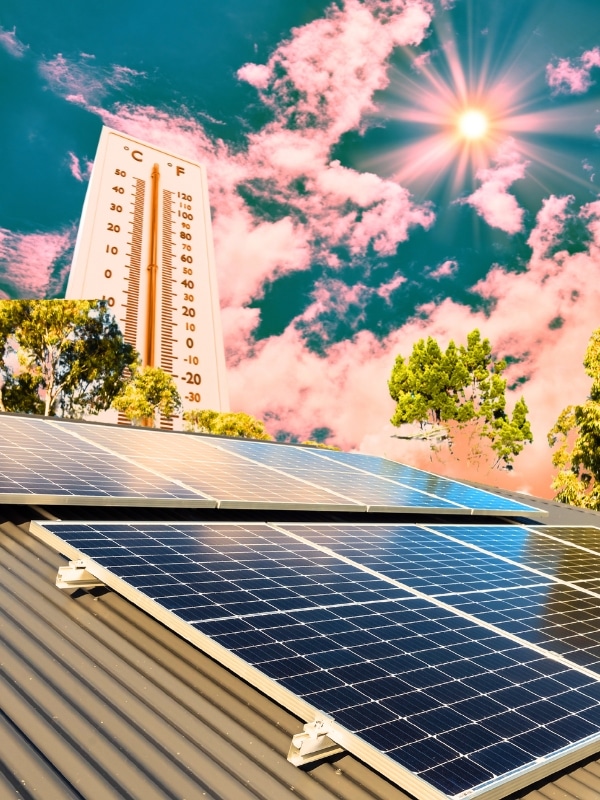
- Temperature coefficients: Solar panels are rated with a temperature coefficient, reflecting their ability to handle heat without a major drop in efficiency.
- UV resistance: Materials used in panel construction are UV-resistant to prevent degradation from continuous sun exposure.
Many quality solar panel brands are designed for extreme heat, making them suitable for areas prone to prolonged sunlight and high temperatures.
2. Strong winds and cyclones
Cyclones and intense winds are frequent in northern Australia. Solar panels in such areas must adhere to higher installation standards to resist uplift forces. Here’s how panels are designed to withstand these forces:
- Mounting systems: Mounts are reinforced to prevent detachment during high winds.
- Wind load ratings: Panels are tested to withstand wind speeds of up to 240 km/h, meaning they can handle even the most severe cyclones.
- Optimised roof positioning: Installers often position panels to reduce wind exposure, minimising the risk of damage.
Proper solar installation is essential in wind-prone areas. Professional installation ensures solar panels are securely fastened in extreme weather to prevent lift and displacement during cyclonic events.
3. Hailstorms and impact resistance
Certain regions, like New South Wales, experience severe hailstorms. Hail impact resistance is a crucial component of solar panel durability, and most panels are designed to handle hail. Here’s what makes this possible:
- Tempered glass layers: Hardened glass enhances impact resistance, preventing cracks and damage from hail.
- Angled positioning: Installers often angle panels to deflect hail impact, which can reduce the force of hailstones.
In extreme cases, additional protective coverings or warranties may be available to guard against hail damage, adding another layer of protection in areas prone to frequent storms.
4. Heavy rain and flooding
While rain doesn’t harm solar panels, flooding or prolonged water exposure can be problematic if the system isn’t properly installed. Here’s how solar panel weatherproofing works to protect against heavy rain:
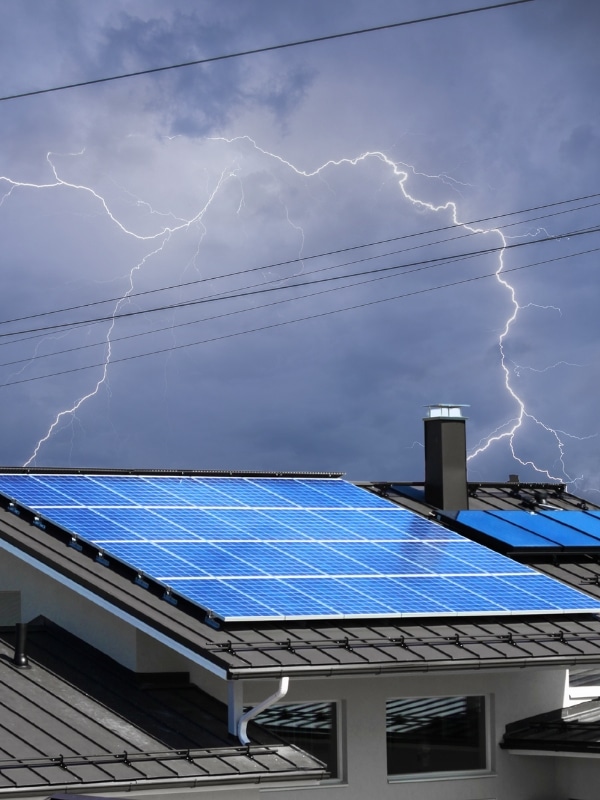
- Waterproof seals: Solar panel edges are sealed with weatherproof materials to prevent water intrusion.
- Drainage systems: Properly installed panels have drainage to prevent water pooling.
- Raised mounts: Panels are often mounted at an angle or on elevated platforms to keep water away.
Regular maintenance, including cleaning debris around the solar panels, helps ensure proper drainage and reduces the risk of water-related issues.
Enhancing solar durability: Installation and maintenance tips
Essential steps for installation and maintenance are required to maximise the lifespan of solar panels, especially in regions with extreme weather.
Selecting high-quality panels and components
Not all solar panels are equal, and solar in harsh climates demand premium products. Investing in panels with proven resilience to heat, wind, and impact is critical for longevity. Look for:
- High wind and impact ratings: Choose panels tested for wind and hail impact, ideally with certifications from bodies like IEC.
- Durable mounting systems: Ensure mounting equipment is corrosion-resistant and strong enough to withstand cyclones and strong winds.
Ready to upgrade your solar systems and take your energy savings to the next level? Embrace the energy efficiency revolution by upgrading your solar systems and adding a battery or solar inverters with Energy Matters.
Routine cleaning and debris removal
While solar panels are generally low-maintenance, keeping them free from debris ensures they operate efficiently and remain weatherproof. Storms often bring debris that can block drainage or create pressure points on the panels.
- Cleaning and dusting: Dust, sand, or salt can accumulate in coastal areas, so regular cleaning keeps solar panels clear. Check our page for our Cleaning Solar Panels: Why, When, and How You Should Do It.
- Checking for damage: After extreme weather events, a quick visual inspection for cracks, loose parts, or pooling water helps prevent long-term damage.
Professional installation and inspection
Installation quality can significantly affect a solar panel system’s ability to withstand extreme weather. Qualified installers know the specific requirements for each climate type and ensure panels are positioned, mounted, and sealed optimally.
- Positioning: Panels should be placed in areas with minimal wind exposure, with a tilt that aids drainage and solar efficiency.
- Regular inspections: Annual inspections can help identify potential issues, such as loose mounts or degraded seals, allowing for quick fixes before severe weather hits.
The future of solar in Australia: A bright outlook
Despite the challenges posed by Australia’s extreme weather conditions, solar energy continues to be a viable and sustainable option for powering homes and businesses. With ongoing advancements in solar technology and increasing awareness of the benefits of renewable energy, the future of solar in Australia looks bright.
Additional considerations
- Local climate: Consider your location and weather patterns when choosing solar panels and installation options.
- Solar panel warranty: A reputable manufacturer will offer a comprehensive warranty covering product performance and material defects.
- Professional installation: Proper installation by a qualified solar installer is essential to ensure optimal performance and longevity of your solar panel system.
By understanding the factors that influence solar panel performance in extreme weather conditions and taking appropriate precautions, you can harness the sun’s power to meet your energy needs while contributing to a more sustainable future.
Are you looking to save money on your electricity bills and reduce your carbon footprint? Solar energy is the perfect solution! Energy Matters is Australia’s best solar power provider via its extensive partnership network of leading installers.
Energy Matters helps Australian home and business owners receive personalised solar quotes through our large network of high-quality solar installers. We only work with reputable solar firms with a proven track record of delivering high-quality solar systems.
Ready to take control of your energy bills and switch to solar? Contact Energy Matters today, and we’ll connect you with up to 3 FREE solar quotes from trusted local solar installers!













